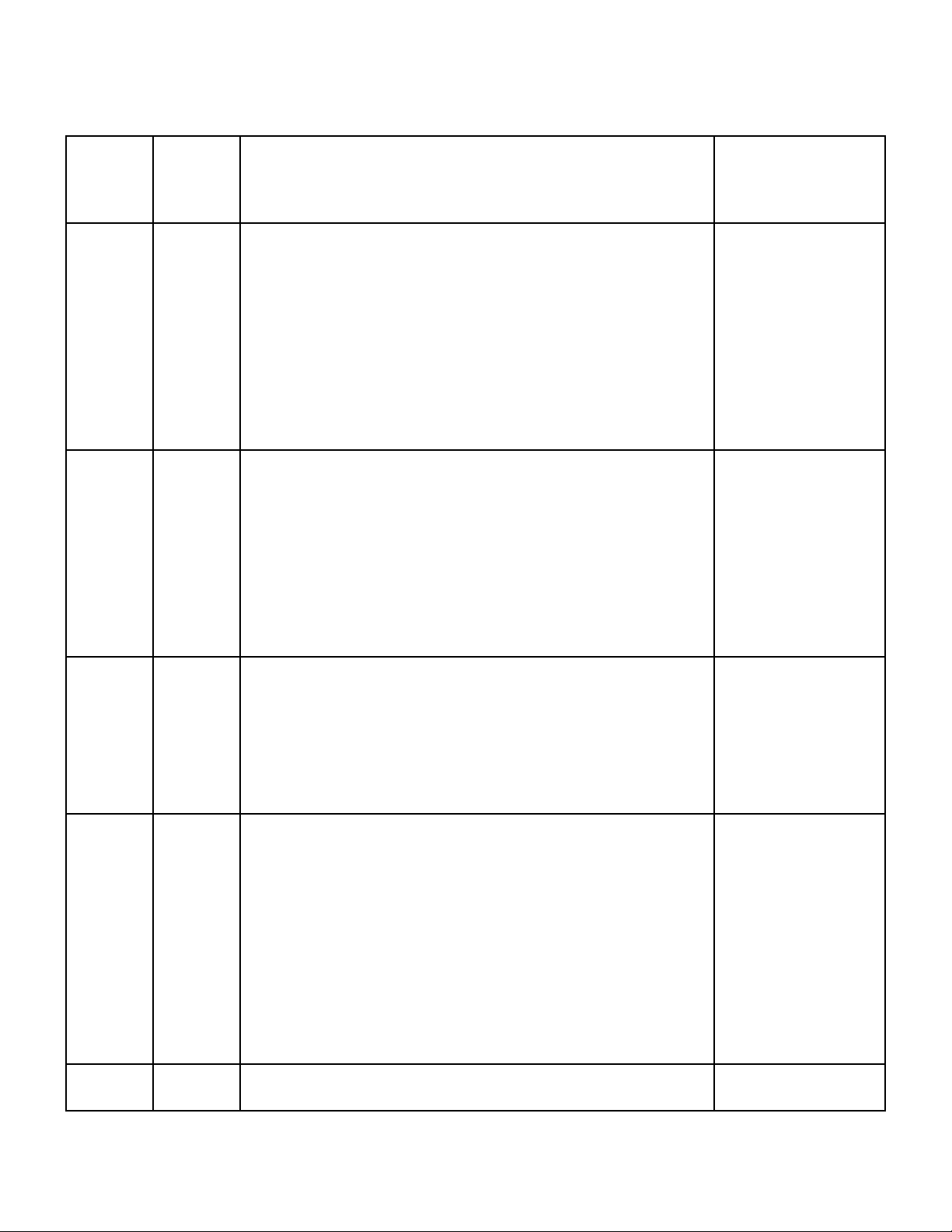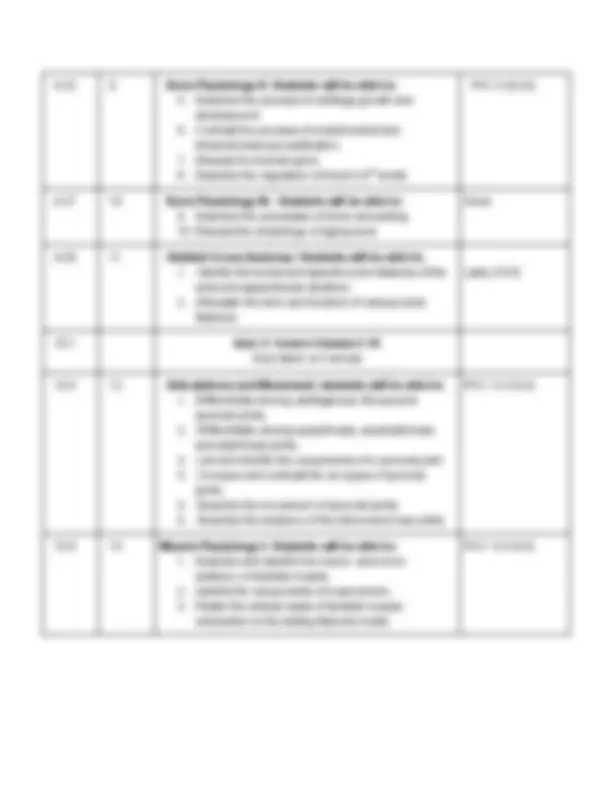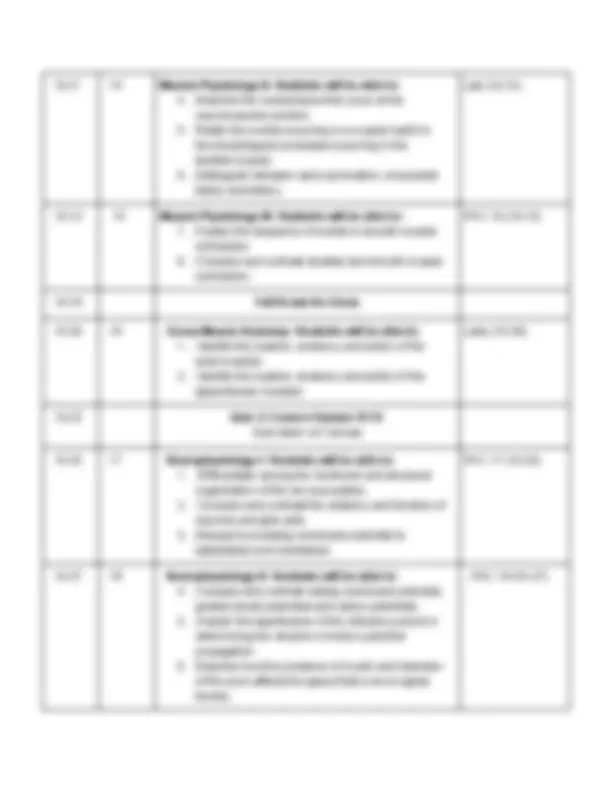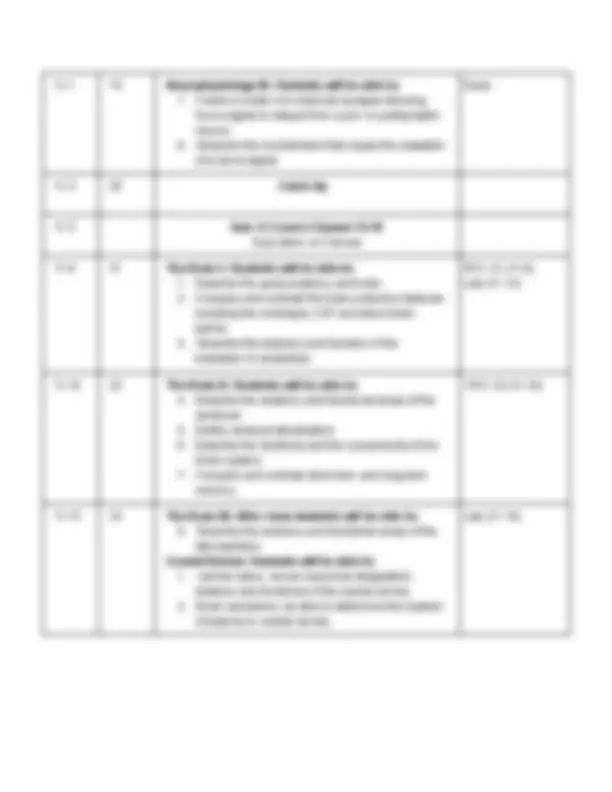





Study with the several resources on Docsity

Earn points by helping other students or get them with a premium plan


Prepare for your exams
Study with the several resources on Docsity

Earn points to download
Earn points by helping other students or get them with a premium plan
Community
Ask the community for help and clear up your study doubts
Discover the best universities in your country according to Docsity users
Free resources
Download our free guides on studying techniques, anxiety management strategies, and thesis advice from Docsity tutors
This is the syllabus for anatomy
Typology: Summaries
1 / 7

This page cannot be seen from the preview
Don't miss anything!




Class schedule Date Mod. Topic with Learning Objectives Module Assignments w/ Due Dates 8.23 1 1. Explanation of the class format, learning objectives and philosophy of the course. Homeostasis and Anatomical Terminology:Students will be able to:
8.30 3 Cellular Biology: Students will be be able to:
Labs (9.3) 9.1 4 Membrane Transport: Students will be able to:
Labs (9.3) 9.6 Labor Day-No Class
9.8 5 Tissues: Students will be able to:
9.15 7 Integumentary System: Students will be able to:
9.20 8 Bone Physiology I: Students will be able to:
10.11 14 Muscle Physiology II: Students will be able to:
10.18 Fall Break-No Class 10.20 16 Gross Muscle Anatomy: Students will be able to:
10.27 18 Neurophysiology II: Students will be able to:
11.1 19 Neurophysiology III: Students will be able to:
Lab (11.12) 11.10 22 The Brain II: Students will be able to:
11.15 23 The Brain III: After class students will be able to: